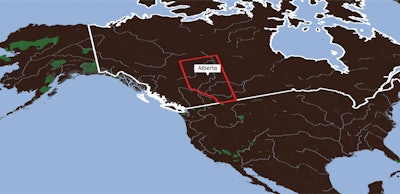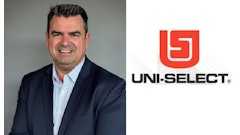

HOW WILL IT IMPACT THE COLLISION MARKET
Story by MICHAEL VAVAROUTSOS
There will now be two more companies following in Zenith Insurance’s footsteps to end their auto insurance coverage in Alberta.
Aviva Direct and Sonnet Insurance have separately announced each will withdraw its auto insurance services from Alberta, effective early January 2025 for Aviva and December 2024 for Sonnet.
For customers, this means they’ll have to find another insurance provider when it’s time to renew their coverage. As the owner of six CARSTAR locations in the Edmonton area, Johnny Kloeckes said that Zenith, Sonnet and Aviva pulling out of the auto insurance market has played no effect on him or the collision repair industry.
Kloeckes’ broker, Rob Rogers, Manager of MHK Insurance Brokers in Calgary, agreed that as an independent broker, he didn’t notice any impact when Zenith pulled out of the Alberta auto insurance market in 2023. “They were such a small player,” he said. “I think they had approximately 14,000 policy holders, which in the grand scheme of things, didn’t have any impact.”
Rogers said the auto industry in Alberta is quite broken right now, and the challenges that are faced in the auto insurance industry and the insurers specifically come from a few different directions. One of these challenges— the province has instituted a profitability cap on the industry. This means that no auto insurer can make more than six percent profit on automobile insurance. “The main factor contributing to the current auto insurance issues in Alberta is the profitability challenges. I’d be concerned for insurance companies in Alberta if Alberta goes into a public auto system,” Rogers explained.
Aaron Sutherland, IBC’s western vice president, said that if Alberta were to consider public insurance, it would cost three billion dollars in taxpayer dollars to start up, according to a report done by the government.
Sutherland added that there are two ways in which public insurance can lower the price for insurers. The first is moving to a no-fault insurance system, although he said there is no reason you wouldn’t be able to move to a no fault under a private system. The second would be to create an ongoing taxpayer subsidy by shifting the cost of car insurance for drivers to taxpayers.
While the province has explored moving to a public option, Sutherland said the region has also expressed a lot of skepticism about whether or not it can be a viable solution in Alberta, considering what has happened in other provinces with public insurance. “ICBC and British Columbia have cost taxpayers over four billion dollars in the past decade. SGI in Saskatchewan and MPI in Manitoba are currently leaving red ink again today, and that’s having an impact on taxpayers in those provinces as well,” Sutherland said. Sutherland stated that there is a possibility that Alberta can move to a no-fault insurance system, around taking action on the legal class underlying coverage.
“But we need to be thinking about holistic solutions as well, and one that’s jumping out in Alberta more and more is what’s going on not just in the repair industry, but in the towing industry as well,” he said. “This type of activity is going to begin to exert real pressure on claims as well.” Heather Mack, the policy and communications advisor at the Automotive Insurance Rate Board, said the Board heard comments from many companies in advance, stating that they were facing some challenges in the auto insurance market.
“There were definitely some warning signs, but we’re talking about companies that have probably less than one percent in the market,” Mack said.
Mack said that the factors contributing to the current auto insurance issues in Alberta are seen in various verticals of the product. For bodily injury, the litigation costs are quite high in Alberta because of the system that they have in place. The province is also seeing continued supply chain issues, cost of parts and cost of repairs.
“All of these things are putting pressure on the premium, and in the midst of an affordability crisis globally, we’re just hearing a lot from consumers that are very concerned about how they can afford something that is a mandatory product. It’s not something they can just decide not to insure their vehicle because it’s required by law,” she said. Mack said there have been several challenges over the last few years, which has ultimately led to the three auto insurance companies’ decision to leave the province. These, along with many more auto insurance companies have been operating at a loss for the past few years.
“Overall there have been some challenges and that’s what the government is looking at reforming right now to address some of those challenges.”
















